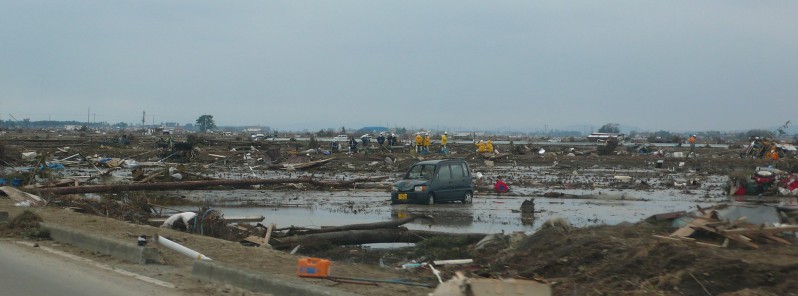Earthquakes and tsunamis from subduction zones more destructive than current estimates

Earthquakes and tsunamis from subduction zones might be more hazardous than current estimates, a new study suggests. Researchers from the University of New Mexico and the Nanyang Technological University developed a new method to assess the dangers represented by the most distant part of offshore subduction zones. The findings show that the hazard might have been underestimated in some areas, indicating that risk assessments should be redone.
Megathrust earthquakes are among the strongest quakes in the world and occur in subduction zones, where two tectonic plates collide and one slides under the other. If the fault between them is stuck, a slip deficit builds up over time. When such earthquakes impact the shallowest part of the fault near the ocean floor, they could shift the seafloor upward, triggering devastating tsunamis.
Therefore, understanding the potential rupture behavior of megathrusts is a crucial task for geoscientists predicting seismic and tsunami hazards. The possibility of seismic behavior is often believed to be somewhat low in the shallow area of the fault, based on laboratory studies of recovered fault zone material.
The fault's slip deficit buildup rate can also be calculated with the use of geodetic observations that monitor how the Earth's surface moves over time, as well as a model that relates how slip on the fault impacts the movement of these stations.
However, researchers were having difficulties using this technique to track what is going on in the shallowest part of the fault as it is far from land and underwater, where traditional GPS tools cannot operate.
Now, the researchers in the study have developed a new geodetic method for deducing this value, which accounts for the interaction between various parts of the fault that results in a much more physically accurate result.
Previous models have failed to take into consideration the fact that if the deep part of the fault is stuck between earthquakes, the shallow part can't move as well, in what they call a stress shadow. There is no buildup of energy to cause it to slip.
By taking this into account, the team was able to develop a technique that uses the same land-based data but results in an improvement in their ability to track the fault slip in the areas that are farthest from the shore. This allowed the researchers to reassess the hazard posed by the offshore parts of subduction zones most prone to a tsunami.
"We applied this technique to the Cascadia and Japan subduction zones and found that wherever deeper locked patches are present, the shallow fault must also have a high slip deficit, regardless of its own frictional properties," said Eric Lindsey, an assistant professor in the UNM Department of Earth and Planetary Sciences.
"If these areas can slip seismically, global tsunami hazard could be higher than currently recognized. Our method identifies critical locations where seafloor observations could yield information about frictional properties of these faults in order to better understand their slip behavior."
The study highlights the importance of calling for a reassessment of previous models of tsunami and megathrust hazards worldwide. The team hopes that this will lead to better preparedness among coastal communities.
.jpg)
Image credit: Flickr
Reference
"Slip rate deficit and earthquake potential on shallow megathrusts" – Lindsey, E. O., et al. – Nature Geoscience – https://doi.org/10.1038/s41561-021-00736-x
Abstract
Most destructive tsunamis are caused by seismic slip on the shallow part of offshore megathrusts. The likelihood of this behaviour is partly determined by the interseismic slip rate deficit, which is often assumed to be low based on frictional studies of shallow fault material. Here, we present a new method for inferring the slip rate deficit from geodetic data that accounts for the stress shadow cast by frictionally locked patches, and show that this approach greatly improves our offshore resolution. We apply this technique to the Cascadia and Japan Trench megathrusts and find that, wherever locked patches are present, the shallow fault generally has a slip rate deficit between 80 and 100% of the plate convergence rate, irrespective of its frictional properties. This finding rules out areas of low kinematic coupling at the trench considered by previous studies. If these areas of the shallow fault can slip seismically, the global tsunami hazard could be higher than currently recognized. Our method identifies critical locations where seafloor observations could yield information about frictional properties of these faults so as to better understand their slip behaviour.
Featured image credit: Flickr

Commenting rules and guidelines
We value the thoughts and opinions of our readers and welcome healthy discussions on our website. In order to maintain a respectful and positive community, we ask that all commenters follow these rules.